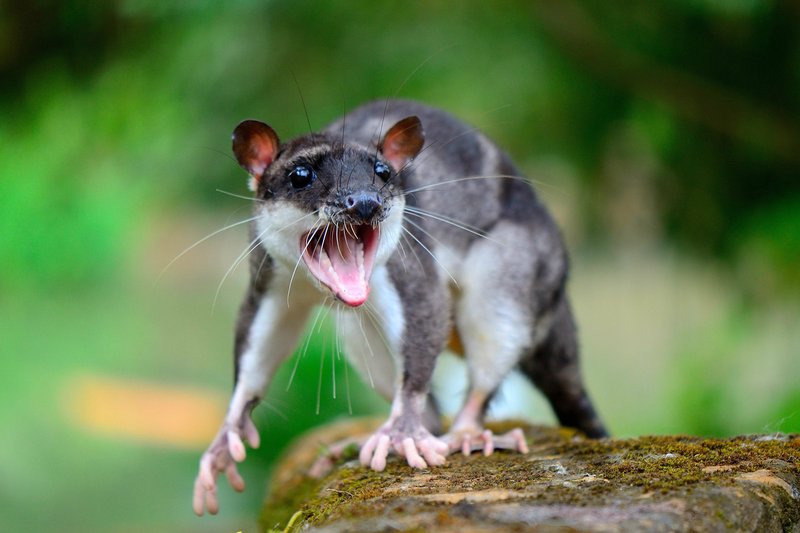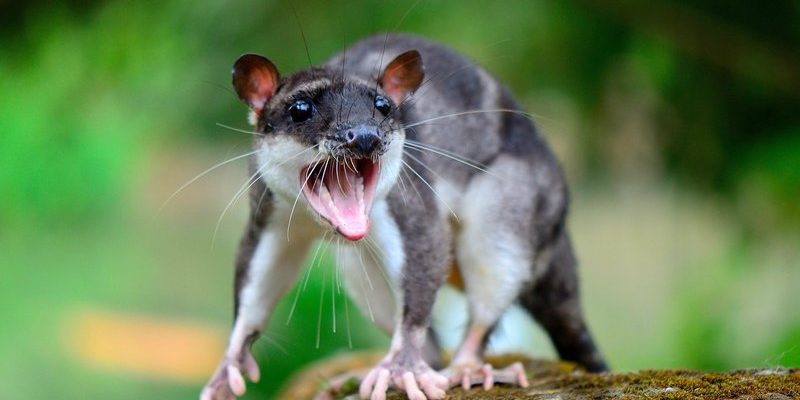
Now, you might be wondering what makes the Yapok so special. Imagine a tiny creature that has evolved to thrive in water, using its abilities to hunt and navigate in aquatic environments. However, like many species, the Yapok is caught in a web of challenges that make its future uncertain. In this article, we’ll explore the conservation status of the Yapok, the threats it faces, and the efforts being made to protect it.
What is the Yapok?
The Yapok is a fascinating little creature that’s often overlooked in the wildlife conservation world. Found primarily in Central and South America, particularly in regions with abundant water bodies, this opossum has adapted to its environment in remarkable ways. Unlike its more famous relatives, the Yapok has a strong affinity for water, showcasing an impressive ability to swim and dive underwater, which it uses to catch its prey and evade predators.
Measuring about the size of a domestic cat, the Yapok possesses webbed feet that assist in swimming, as well as a fur coat that helps maintain its body temperature while in the water. Their diet mainly consists of fish, crustaceans, and other aquatic organisms, making them a vital part of their ecosystem. However, despite their unique adaptations, Yapoks are increasingly at risk, which is why understanding their plight is essential for conservation efforts.
The Conservation Status of the Yapok
The Yapok is currently listed as *Near Threatened* on the IUCN Red List. This classification indicates that while the species is not in immediate danger of extinction, it is facing a rising threat level. Population estimates are challenging to determine due to the Yapok’s elusive nature and its preference for dense, watery habitats. However, habitat loss is one of the primary concerns for these creatures.
The Yapok’s population is dwindling in areas where wetlands are drained for agriculture or urban development. These wetlands provide essential resources and habitats for Yapoks, and their degradation directly impacts the species’ survival. To protect the Yapok, it’s crucial to understand exactly what threats it faces and how we can mitigate them.
Threats to the Yapok
Several key threats are contributing to the decline of the Yapok population. Let’s break down the most pressing challenges:
- Habitat Loss: Industrial development, agriculture, and urban expansion have led to significant loss of wetland areas. This not only removes the Yapok’s home but also disrupts their food supply.
- Pollution: Pesticides and other pollutants can have devastating effects on aquatic ecosystems. Contaminated water sources pose a direct threat to the Yapok’s health and food supply.
- Climate Change: Rising temperatures and changing weather patterns can alter the Yapok’s habitat, leading to further loss of wetlands. These changes can affect breeding patterns and food availability.
- Human Encroachment: As people expand their reach into natural habitats, Yapoks are forced into smaller, fragmented areas where they struggle to find food and mates.
Each of these threats compounds the challenges the Yapok faces, highlighting the urgent need for conservation action.
Conservation Efforts for the Yapok
Efforts to conserve the Yapok and its habitat are essential to ensure that this unique species doesn’t disappear. Various organizations and researchers are working hard to protect these animals in several ways:
- Habitat Restoration: Initiatives aimed at restoring wetland areas and improving water quality are crucial. Rehabilitating these ecosystems can provide a safe haven for Yapoks and other wildlife.
- Public Awareness Campaigns: Educating communities about the importance of the Yapok and its habitat can lead to greater public support for conservation efforts. When local communities understand the value of preserving biodiversity, they’re more likely to protect it.
- Research and Monitoring: Continued research into the Yapok’s behaviors, ecology, and population dynamics is critical. Long-term monitoring helps scientists measure the effectiveness of conservation strategies and adjust them as needed.
- Legal Protections: Enforcing laws that protect wetlands and threatened species is vital. Strong legal frameworks can safeguard both the Yapok’s habitat and the biodiversity it supports.
Through these combined efforts, there’s hope for the Yapok’s future.
The Role of Local Communities in Conservation
Local communities often serve as the frontline defenders of wildlife, including the Yapok. Their involvement in conservation efforts can be transformative. When communities are engaged, they can provide invaluable knowledge about local ecosystems and the wildlife that inhabits them.
Promoting sustainable practices, like eco-friendly agriculture and responsible land use, can help alleviate some pressures on Yapok habitats. Furthermore, community-led conservation initiatives can foster a sense of stewardship and pride in protecting local wildlife. When people feel a connection to their natural surroundings, they’re more likely to advocate for their preservation.
Additionally, tourism can play a role. In areas where Yapoks are found, eco-tourism can provide an economic incentive to protect their habitats rather than destroy them. When visitors come to see these unique creatures in the wild, the local economy benefits without compromising the ecosystem.
What Can You Do to Help?
You might be wondering how you can help with the conservation of the Yapok, even if you’re thousands of miles away from its habitat. Here are some simple actions you can take:
- Support Conservation Organizations: Many nonprofits focus on protecting endangered species and their habitats. Donating or volunteering with these organizations can make a difference.
- Reduce Water Pollution: Being mindful of what you put down the drain or into the environment can help protect aquatic habitats. Choose eco-friendly products and reduce plastic use.
- Promote Awareness: Share information about the Yapok and other endangered species with your network. The more people know about these issues, the more they can advocate for change.
- Choose Sustainable Products: Support businesses that prioritize sustainability and ethical practices. Every small choice adds up to a larger impact on the environment.
Every action counts, no matter how small. By raising awareness and supporting conservation efforts, you can play a part in protecting the Yapok and its ecosystem.
The Yapok might not be the most famous endangered species, but its story is just as crucial. As we explore the complexities of conservation, the plight of the Yapok serves as a reminder of the interconnectedness of all living things. By understanding the challenges it faces and the efforts being made to protect it, we can all contribute to a brighter future for this unique creature. Whether through supporting conservation initiatives or simply spreading awareness, each of us has the power to make a difference. Let’s ensure that the Yapok continues to thrive in its watery domain, reminding us of the beauty and diversity of our planet.

